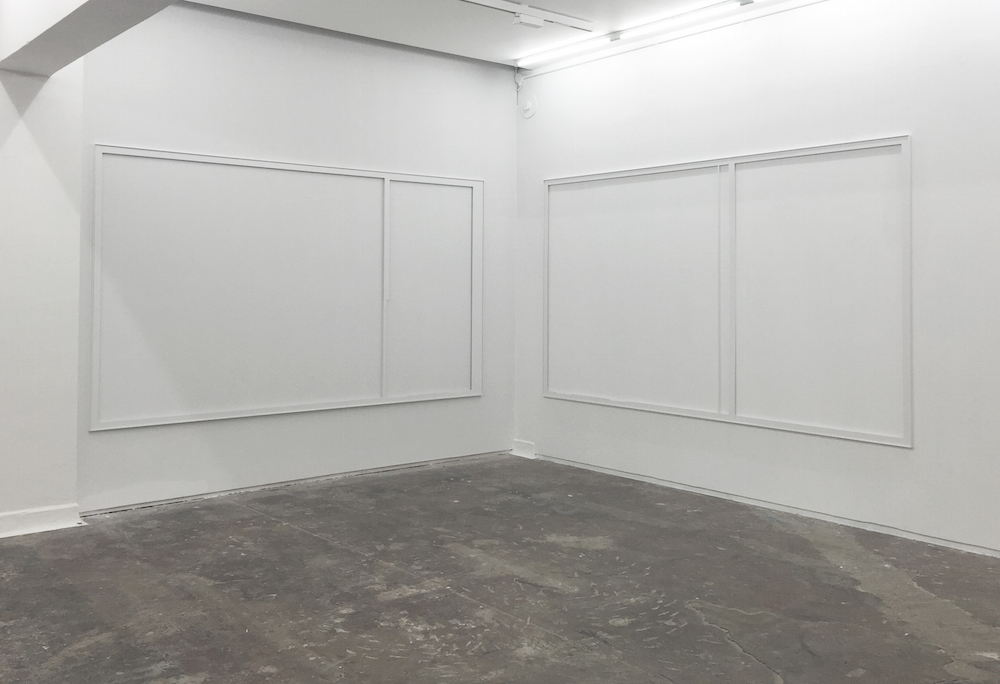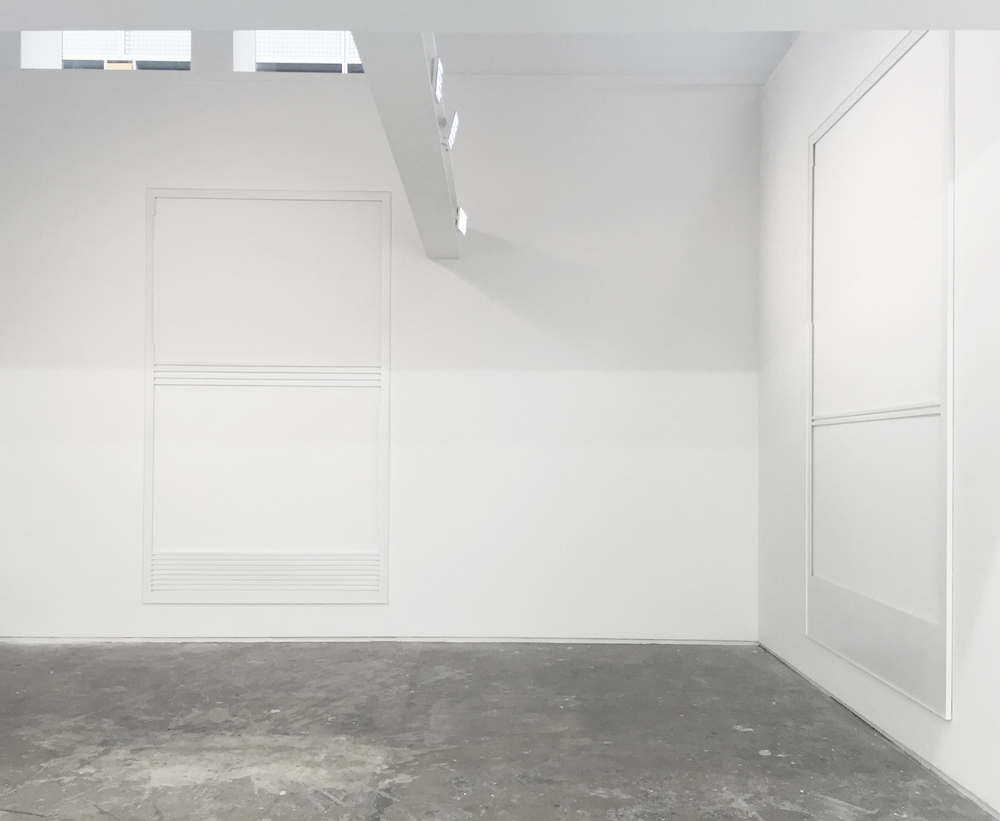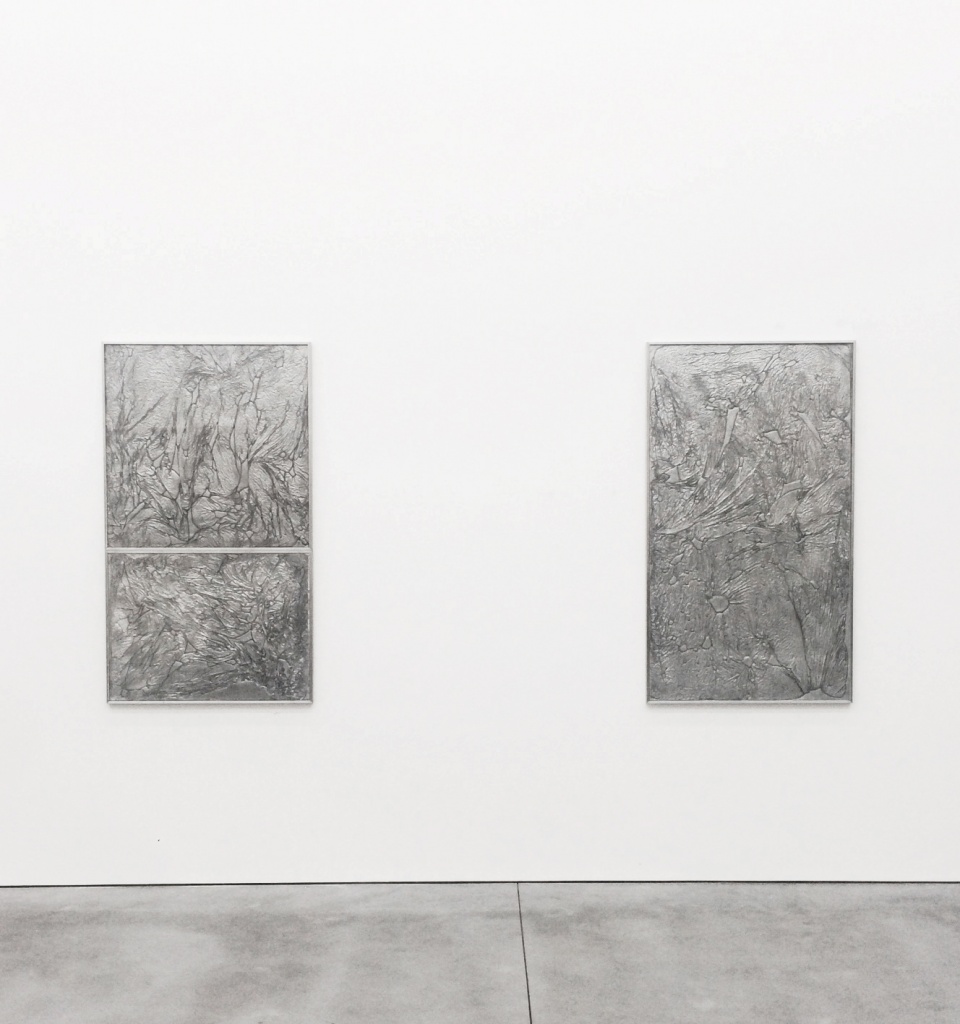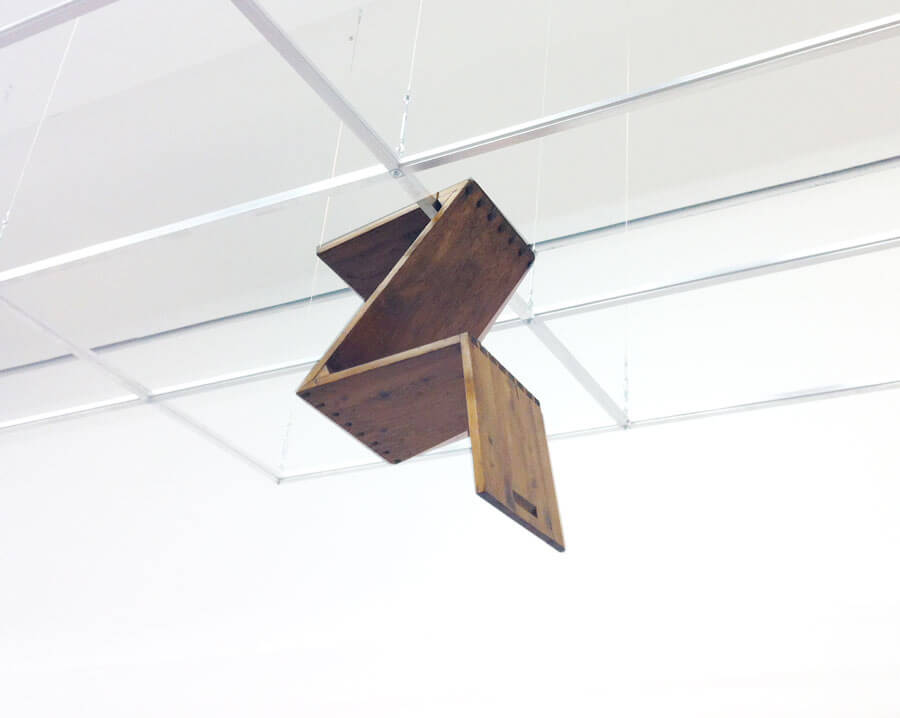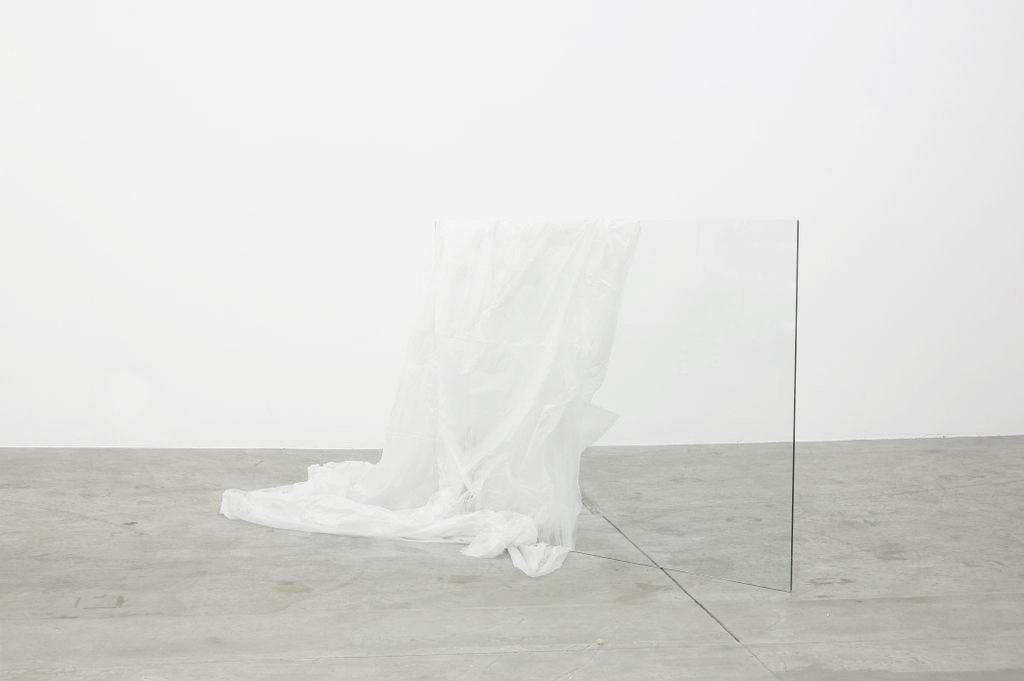Artists Patrick Foster and Jen Berean–from Australia and Canada respectively–comprise the duo Foster & Berean. Living and working geographically apart, one in London, one in New York, the majority of their planning takes place in the digital sphere, within the realms of architectural 3D modelling software. The pair return to London’s Evelyn Yard this week, with solo exhibition, Shadow of a Doubt.
Can you tell us a little about the work that will be showing in Shadow of a Doubt?
The works we are showing are a series of large white aluminium wall based sculptures. We used a collection of off-cuts from laser cut MDF panels, collected from an architectural model making company as a starting point, and then these remnant forms were redrawn by us on the computer using 3D modeling software. The discarded off-cuts to us represent a physical manifestation of the space around other people’s ideas. The outlines and cuts that exist within the scraps and unwanted pieces hint at the forms that were cut to build models of future architecture. But when removed, they start to suggest their own architecture, or a type of potential space of a built environment. Once we redraw these discarded off-cuts with the computer, they are dissolved of scale and context. They become sizeless and unitless. After they are drawn we then have them reproduced at the largest panel size available to cut by the laser cutters. The idea is that at this new scale, in their newly exaggerated presence they start to actually become architecture. They expand beyond the propositional scale of a model and become part of the infrastructure of the space of the gallery. They take on the scale of building material itself.
Living in different cities, much of your process exists within the virtual realms. Has it always been this way, or is this a manner of working that has developed over time?
This way of working has always existed in our practice to some extent, but over time it has developed and become more significant in our working methods. Our work has always used a language of architecture and because fabricators other than ourselves produce much of it, we often rely on architectural drawings to communicate the intent of the work to be produced. When we lived and worked in the same city as each other we would go through this process together in the studio. Now that we are in different cities we use the virtual space of computers to communicate with not only with the fabricators, but also with each other. We work together in real time by sharing screens, and we also email/text drawings back and forth in conversation, editing at each end. With that said, the virtual realms we work in are only part of our process and are a means to an end, the work itself is never virtual.
Do you feel that your different locations inform the work in any way? Do elements of London and New York come together?
We are certainly both individually influenced by what we see and experience in each city, all of which we bring to the table when developing new work. A lot of our earlier work was informed by our shared time in New York, where the city’s infrastructure and architecture became a heavy influence on our research. Over the past 12 years of working together we have also undertaken many residencies in different cities throughout the world. The built environments that surround us influence much of our work, in material and form. So it is natural that each of these places we have been to has impacted the work we have made there. For example, last year we spent some time in Prato, Italy a town known for its textile manufacturing industry. Here we worked with local manufacturers to make rolls of fabric woven with metal. When we were undertaking a residency in Dublin we used glass, barricades, construction materials – all materials and imagery taken around the city from the numerous brand new builds, abandoned before they were ever used because of the financial crisis. Whilst we are influenced by specific places we are in, we also try to ensure the work uses a universal language.
Many of your titles have a balance of positive and negative, as though they are searching for a cure or equilibrium. Does this sense of balance exist for you as a pair as well, or do you both tend to start from a similar viewpoint?
We both start from a similar viewpoint (on most things), and our collaboration is not so much a negotiation between the two of us, it is very much of singular mind. But this search for equilibrium is definitely part of the outcome of the work itself. We are interested in finding the point between places, between the positive and negative, the built and un-built, the concept and the outcome.
How does architecture and design inform your practice?
Architecture and design informs our practice in a number of different ways. Firstly, there is the practical side in that Jen is an architect and we use the software and the technology to produce the work itself. There is also the idea of function that is intrinsic to architecture and design. Our work often alludes to a function but sits within an uncomfortable space between being recognisable as a useful object yet ultimately it is functionless. Architectural processes and model making heavily inform the work at Evelyn Yard. The sculptures have the physicality of built architecture whilst still alluding to the propositional.
Foster & Berean: Shadow of a Doubt is showing at Evelyn Yard from 27 Nov until 23 Dec 2015
